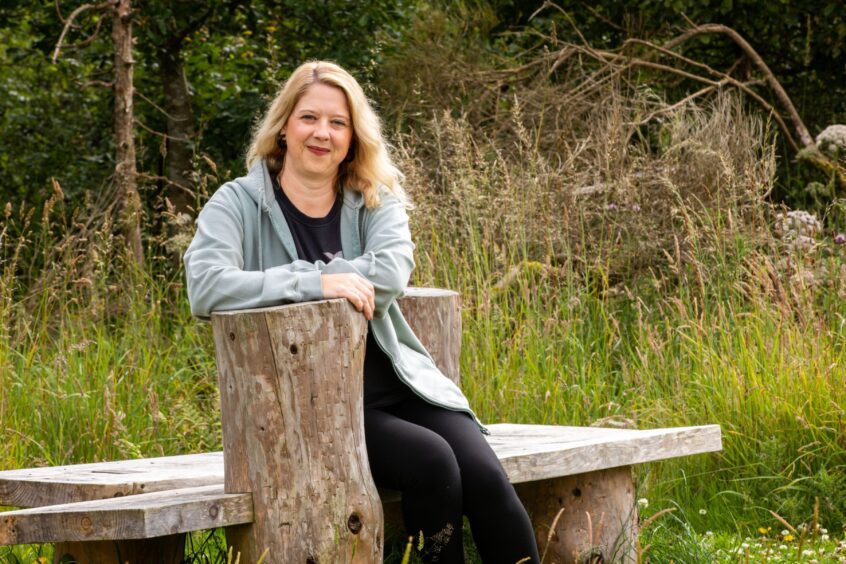
Karyn McKay set up her childminding business in Glenrothes two years ago to offer something different – “a more natural experience”.
“A lot of parents are looking for it,” she said. “They want a more natural experience for their children – being outdoors more, connecting with nature.”
But in setting up her latest childminding business, Forest Friends, Karyn was going against a trend of declining childcare.
Fife, where Karyn is based, has lost a third of all childcare services since 2017.
Angus and Stirling have also lost more than a third of their total services over the seven years.
Across Scotland, there are a total of 2,635 fewer services than in 2017.
The figures apply to all Care Inspectorate categories for childcare: childcare agencies, day care of children and childminding.
Day care of children includes any childcare in a centre-based facility such as nurseries, playgroups and afterschool clubs as day care of children.
In charge of monitoring Scotland’s standards of care, the Care Inspectorate publishes information on the performance and registration of all care services.
We have launched trackers to allow readers to access crucial information on the standards of care homes and childcare services in their area.
The analysis highlighted a considerable decline in the number of childcare services, especially in childminding.
‘It would be too significant of a loss’
Forest Friends is not Karyn’s first venture into childminding.
With more than a decade of experience, she first switched from nursery to childminding for her own children.
She said: “When my own children were very small, my husband worked away.
“I childminded until my children were all up. It was a great experience and suited our family life.”
But her latest childminding business is a “completely different experience”.
Karyn, 47, only works with three children each day aged between three and five.
She prioritises “skills that will last into adulthood” and outdoor play.
“We have the flexibility that if they are showing an interest in something we can just hop on the train and go,” she added.
However, that type of childcare is starkly falling with the number of registered childminders across Scotland going from 5,344 in June 2017 to 3,043.
Dundee had the third biggest percentage decrease across Scotland, dropping from 162 childminders to 69.
More than half of childminders also cancelled their service in Angus and Fife.
For Fife that means 242 childminding businesses compared with 488 seven years ago.
Meanwhile, Stirling and Perth & Kinross figures fell by 46.7% and 41.4% respectively.
The Scottish Childminding Association (SCMA) chief executive Graeme McAlister said the workforce has been falling since 2016.
For the first time, their latest audit projected ahead to the losses expected “if we don’t act”.
Graeme said: “That was quite alarming because what the projection showed is that our workforce would decline by 64% by 2026.
“There wouldn’t be any recovering from that. It would be too significant of a loss.”
Why are childminding numbers falling?
SCMA has recently expanded its efforts to boost childminding recruitment and retention with the launch of a three-year funded programme.
The Programme for Scotland’s Childminding Future hopes to recruit 1,000 childminders in the next three years.
But the obstacles that have seen a decline so far include an ageing workforce, insufficient recruitment or promotion of childminding as a career and the challenges associated with the expansion of funded early learning and childcare (ELC).
“It was a really ambitious policy from the Scottish Government,” Graeme said on the ELC expansion in 2016.
“But what it meant was a significant scaling up across Scotland of what was available to children and families.
“Childminders were reporting to us they were finding it quite difficult to get involved in the expansion of childcare.
“There were also issues that with early learning expanded including duplicated paperwork.”
That is not always the case as Karyn prefers to offer funded places, having experienced the paperwork in nurseries.
“It suits families who are working because although I offer funded places through partnership with Fife Council, I can also do wrap-around care if the parents have to work a bit later,” she said.
“I feel like there is a lot of support for childminders now that has grown over the years from when I did it previously.
“That’s why I only really offer funded places because I prefer the professionalism of it.”
What about nurseries and other day care options?
In 2017, there were nearly 2,000 more registered childminders than day care of children services.
While the day care service numbers have dropped from 3,696 to 3,373 last month, the service type now outnumbers individual childminders.
Day care of children services have not declined past a fifth in any local authority.
Perth and Kinross saw the fifth biggest fall in these services across Scotland– a 14.75% decrease.
Stirling saw a drop of 15.4% or net loss of 10 total services.
Fife also lost over a tenth of its services in the category, going from 250 to 223.
Across the country, the figure only rose or remained the same in three councils from June 2017 to 2024.
Where are Scotland’s childcare options?
After launching a three year strategy in 2021, SCMA successfully recruited and established over 80 new childminders in Scotland.
This involved work with local authorities across Scotland. New models of childminding recruitment, including targeted digital advertising, were tested in rural areas.
“Childminders themselves, particularly in rural areas, become a really valued community asset. It is a local resource,” the SCMA chief executive added.
Referencing ambitions to expand funded childcare, he said: “The reality is that at the moment if some families cannot access the current offer, you will actually end up inadvertently widening inequalities.
“What [their recruitment programme] is doing is really trying to put in place infrastructure to ensure that families can actually access the statutory entitlement.”
The rate of childcare services is shown in the map below in reference to data zones.
Data zones are listed for every Care Inspectorate service. They are key geographic regions splitting Scotland into population areas of 500 to 1,000 residents.
The map shows a lower density of childminding services in rural areas than day care services such as nurseries.
The distribution of day care services is more consistent throughout the rural data zones stretching across bigger geographical regions.
Fife now has the highest number of childminders across Scotland with 242 being higher than figures in Glasgow or Edinburgh.
But even there, demand can exceed supply.
“I think when I first opened, I had 16 children on a waiting list,” Karyn said.
“Because I only take three children every day and the one age group, there is obviously people interested in it. I like being small scale.
“A lot of people have said to me why don’t you get an assistant and expand but it would just lose the ethos of Forest Friends for me.”
‘A very high quality form of childcare’
Nevertheless, there are efforts to streamline duplicated admin work faced by childminders.
The Scottish Government has also committed the Care Inspectorate and Education Scotland to create a single framework for quality inspection.
It is hoped this will reduce time spent doubling up on admin, but work is also needed to change how the vital job is viewed.
Graeme added: “There are a lot of outdated misperceptions that childminding is just babysitting. It is not.
“What many people don’t realise is that childminding is a registered form of childcare.
“Childminders year on year achieve higher ratings across all quality criteria through independent inspection of the Care Inspectorate than day care of children services.
“Childminding is a very high quality form of childcare but those misperceptions are affecting things as well.”
On local authority levels, childminding on average outperforms day care of children service in terms of the setting and play and learning.
The categories help form the key questions used by the Care Inspectorate to rank performance on a six point scale.
The average performance of childminding services in Dundee for play and learning was 4.62. Meanwhile, day care services had an average of 4.48.
However, overall, both childminding and day care of children services tend to perform quite well.
The lowest council average grade was 4.15.
What is being done?
The Programme for Scotland’s Childminding Future will see the SCMA’s recruitment programme now scaled up across the country.
Half of Scotland’s local authorities, including Fife, are participating. It will focus on keeping people in the job as well as hiring new staff.
It includes new initiatives such as funded time off the floor to allow childminders time to carry out paperwork and training.
Graeme said: “What we are working to do is to try and change the perception of childminding but also childcare itself.
“Historically childcare has been perceived as quite low level. It is hugely important for child development, learning, care and nurture.
“But in practical terms, childcare enables parents to work, to seek work and to stay in work and that is massively important to families. At a national level, people are actually recognising that without childcare you have big problems.”
Many of the children Karyn takes care off also attend nursery on some days and she believes the variety of childcare benefits the young ones as well as the parents.
She said: “The blended care works really well. I think it means the children are getting the best out of both worlds.
“It is amazing that just in the two years I have been open as Forest Friends, the connection that the children have to nature and their local environment is just amazing.
“They learn to sew, they learn to garden, to cook and I just think these skills will last into adulthood.”
Where can I find more?
We have introduced two new trackers that provide up to date information on the performance of childcare services and care homes.
Use our childcare tracker to compare and contrast services in your area or see how your council performs.
Our care home tracker aggregates data for all care homes in Scotland. There is also added analysis for Dundee, Perth, Stirling, Perth and Kinross, and Angus.













Conversation